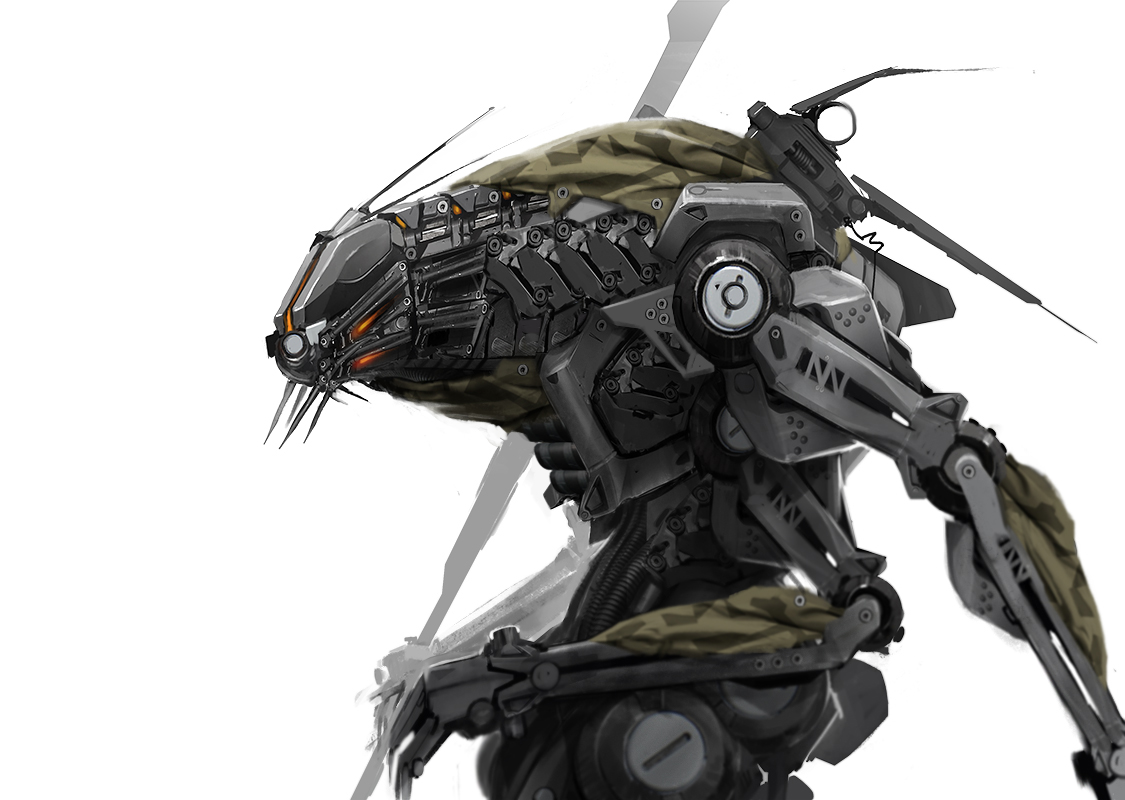Alkor Centaris
Son of Liberty


Intent: To revisit the SD series droids and give them a new (terrifying) face.
Image Source: Polycount.com
Canon Link: SD Series Battle Droid.
Permissions: -
Primary Source: -

Manufacturer: Balmorran Arms
Affiliation: Closed-Market.
Model: SD-XI Battle Droid.
Production: Mass-Produced.
Modularity: No.
Material: Durasteel, Advanced Servomotors, Faraday cage inlay, Targeting Sensors, blaster components, plasma thrower components, Deflector Shield components

Classification: Fourth Degree.
Weight: Very Heavy (226.8 kg)
Height: Large (1.9 m)
Movement: Bipedal.
Armaments: Very High Plasma Burst Cannon, Heavy Repeating Blaster, Force Pike.
Misc. Equipment: Ray type Deflector Shields
Resistances
Energy: Average
Kinetic: High
Lightsabers: None
EMP/Ion: Very High

- Reinforced Durasteel plating offers resilience against ballistics, as well as most melee weapons. This makes the SD-XI ideal for assaulting an enemy position at range and in close quarters.
- Ray type Deflector shield generator gives the unit maximized protection from energy based weaponry at a distance, giving the unit a distinct advantage for closing a wide gap or weathering heavy firepower.
- Force Pike armament allows the Droid a fighting chance in close quarters, since its primary weapons are less effective there.
- Faraday Cage inlay prevents systems from losing power to short wavelength electromagnetic pulses.

EM Hardened: pulses intended to kill electronics do not short out the SD-XI's systems completely. Sustained currents, ionic attacks, and large bursts (such as lightning) will shut the systems down and require a reboot, and possibly even try circuitry.
Multiple arms: allow for the use of multiple weapons at a time.
Plating and Shields: increased protection from a distance, allowing the SD-XI superiority in a firefight. They are not intended for close range combat, but are capable of it.

Durasteel isn't immune to high concentrations of heat: The SD-XI should not be deployed on volcanic world's that would cause damage to its systems over time, and if someone gets close enough to bypass the shields, or uses a lightsaber in close combat, its plating would do very little to prevent catastrophic damage.
Heavy: The Unit simply cannot traverse areas that have a low weight threshold, and it is cumbersome to transport. As such, deployment in large quantities takes more time, and should be considered only in lengthy engagements.
Not your low-end battle droid: while droids are always a small price compared to human lives, the SD-10 is an investment worth protecting. One is easily worth ten of their lesser counterparts, and losing a single unit is harsh on one's bank account. You do get what you pay for, though.
Explosive Experience: When the SD-XI is compromised in combat, it is designed to self-destruct, taking the programs used in its creation and anything that can be reverse engineered with it. The problem is, this can happen in close proximity to allied units. Balmorran doesn't take risks with trade secrets, and they're not above friendly fire to prevent it.
Mismatched against opponents geared toward close combat: While capable of fighting at close range, an effective combatant with weapons that can breach its plating can make short work of the unit. It is recommended to supplement them with ample ground forces capable of providing support. It's ability to use the Force Pike is also extremely limited.
Slow moving: While quicker than it's predecessors, the droids are essentially tanks. Slow moving, heavy hitting.

The SD series sank into obscurity after the Gulag Plague ravaged the known galaxy to its fringes. Stories of the destructive power endowed into their programming remained in whispers: a strength enough to rival the might of the Galactic Empire when they came to exert dominance over the company that created the weapons. When the time finally came to dust off the old Droid Factory and create something new and marketable for modern warfare, Balmorran Arms decided to revive the line, and its legend.
The SD series had always boasted a myriad of features that made it more cutthroat than the competition- from self-healing metals to energy reflecting coatings, they terrified anyone unlucky enough to be on the receiving end of an invading force. Unfortunately for Balmorran, those types of resources had grown increasingly scarce in the years that followed the Plague, strip mined away by various Empires and Orders that rose and fell. What they did have, however, were the best design teams and development crew money could buy.
In light of their limitations, the team designed a unit that capitalized on multiple aspects of a combat zone to optimize its utility at minimized expense. Thus, the cost of the Droid overall could be decreased, and less of that expense would have to transfer to the customer- a marketing strategy that was sure to turn heads, when one considered the fact that they were still getting maximum lethality.
Far shorter than its predecessors, the SD-XI. makes up for the lack of behemoth size with increased quickness relative to older models while not compromising on firepower.
Last edited:













